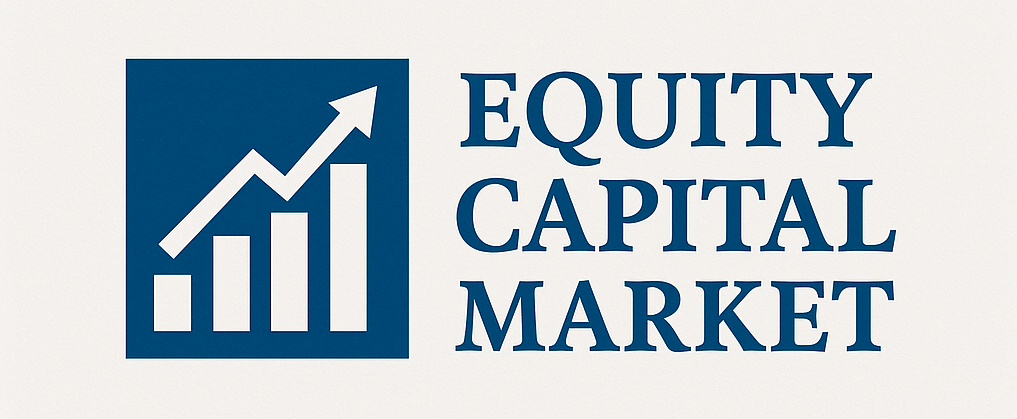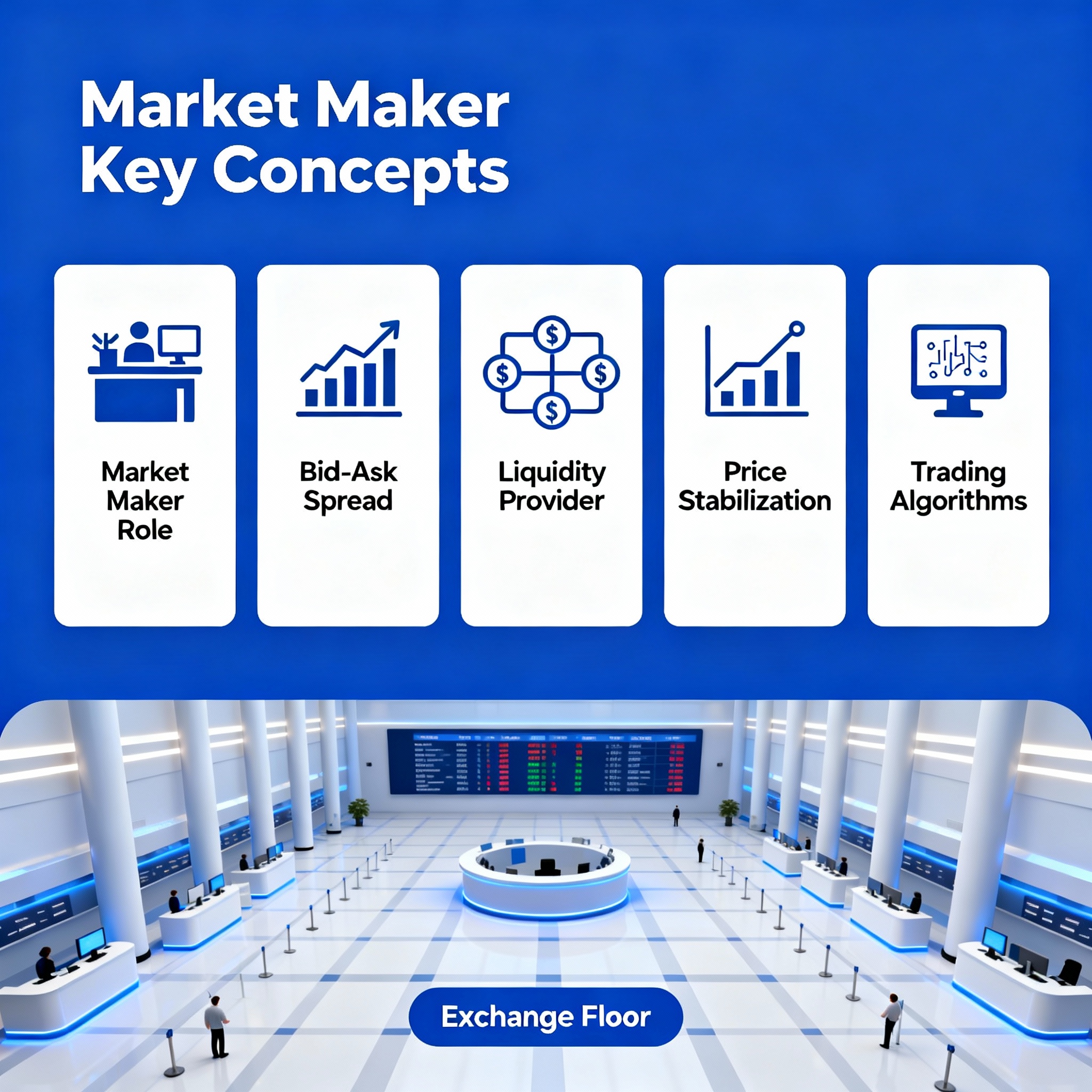The Essential Role of Liquidity Providers in Financial Markets
Market makers are specialized financial firms or individuals that stand ready to buy and sell securities at publicly quoted prices, ensuring that markets remain liquid and functional even during periods of low trading activity. Acting as intermediaries between buyers and sellers, market makers provide continuous two-sided quotes—both bid prices (where they’ll buy) and ask prices (where they’ll sell)—creating immediate execution opportunities for traders. By absorbing temporary supply-demand imbalances and maintaining orderly price discovery, market makers reduce volatility, narrow bid-ask spreads, and enable efficient capital allocation across financial markets. Understanding how market makers operate, manage risk, and profit from their activities is essential for anyone seeking to comprehend modern market microstructure.
The Mechanics of Market Making
Market making operates on a deceptively simple principle: buy low, sell high, and do it repeatedly throughout the trading day. Market makers continuously post bid and ask quotes for securities they’re assigned to cover, creating a standing offer to transact. When an investor wants to buy shares immediately, they purchase at the market maker’s ask price; when selling, they receive the market maker’s bid price. The difference between these two prices—the bid-ask spread—represents the market maker’s gross profit per transaction before costs.
Understanding the Bid-Ask Spread
The bid-ask spread serves multiple functions in market structure. It compensates market makers for the immediacy service they provide, covering operational costs (technology, compliance, personnel) and adverse selection risk—the probability that they’re trading with someone who has superior information. Spreads vary significantly across securities based on factors like trading volume, volatility, and information asymmetry.
Bid-Ask Spread Formula:
Spread = Ask Price – Bid Price
Percentage Spread = ((Ask – Bid) / Midpoint) × 100
For example, if a stock has a bid of $50.00 and an ask of $50.10, the absolute spread is $0.10 and the percentage spread is 0.20%. High-volume, liquid stocks like Apple might have spreads of just $0.01 (0.002%), while thinly traded small-cap stocks might see spreads of 5% or more.
Inventory Management and Risk Control
Market makers face continuous inventory risk. When they buy shares at the bid, they hope to quickly sell at the ask, but if market prices decline before they can offload their position, they incur losses. Conversely, if they sell short at the ask and prices rise before they can buy back, they also lose money. Effective inventory management is therefore critical to market maker profitability.
Market makers employ sophisticated hedging strategies and algorithmic systems to manage inventory risk. They might hedge directional exposure using index futures or options, dynamically adjust their bid-ask spreads based on current inventory positions (widening spreads when they hold large positions to discourage further accumulation), or trade with other market makers to rebalance positions.
Inventory Risk Premium:
Required Spread ≥ (σ√(T/2)) + Transaction Costs
Where σ is volatility and T is expected holding period. Higher volatility or longer expected holding periods demand wider spreads to compensate for increased inventory risk.
Trading Algorithms and Price Stabilization
Modern market making relies heavily on trading algorithms that continuously monitor order books, news feeds, and market conditions to update quotes milliseconds after new information arrives. These algorithms employ statistical models and machine learning to predict short-term price movements and optimize quote placement. The most sophisticated market makers operate across multiple venues simultaneously, providing liquidity on lit exchanges, dark pools, and alternative trading systems while managing consolidated risk across all platforms.
Market makers contribute significantly to price stabilization by absorbing temporary imbalances between buy and sell orders. When excessive selling pressure emerges, market makers step in as buyers (though at lower bid prices); when buying pressure dominates, they become sellers (at higher ask prices). This countercyclical behavior dampens price volatility and reduces the magnitude of price swings that would occur in their absence. However, during extreme market stress—such as the 2010 Flash Crash or March 2020 COVID panic—even market makers can withdraw liquidity when their risk management systems trigger circuit breakers, potentially exacerbating volatility.
Real-World Examples and Market Participants
Major market makers include firms like Citadel Securities, Virtu Financial, Jane Street, and Two Sigma Securities, which together handle significant percentages of daily U.S. equity trading volume. On the NASDAQ, designated market makers have explicit obligations to maintain continuous quotes within specified spreads. On the NYSE, Designated Market Makers (DMMs) combine electronic market making with human judgment, particularly during market opens, closes, and periods of significant imbalance.
Consider Citadel Securities, which reports executing approximately 47% of all U.S.-listed retail volume across more than 8,900 securities. The firm’s technology infrastructure can handle millions of quotes per second, adjusting prices based on microsecond changes in market conditions. In foreign exchange markets, banks like J.P. Morgan and Citigroup act as market makers, posting continuous bid-ask spreads for currency pairs and profiting from the cumulative spread across billions of dollars in daily trading volume.
Broker-Dealer Distinction and Regulatory Framework
Market makers typically operate as broker-dealers, registered with the SEC and FINRA, subject to capital requirements, trade reporting obligations, and best execution standards. The distinction between broker (agent executing customer orders) and dealer (principal trading from own account) is important: as dealers, market makers bear inventory risk and price risk that brokers do not. Regulations like Reg NMS (National Market System) govern quote display requirements, trade-through prohibitions, and access to displayed quotations, creating the framework within which market makers operate.
Glossary
Market Maker: A firm or individual that continuously quotes both buy (bid) and sell (ask) prices for financial instruments, standing ready to trade at those prices and thereby providing liquidity to the market.
Bid-Ask Spread: The difference between the highest price a buyer is willing to pay (bid) and the lowest price a seller is willing to accept (ask) for a security, representing the market maker’s gross profit per transaction.
Liquidity: The degree to which an asset can be quickly bought or sold in the market at stable prices. High liquidity means transactions can occur rapidly with minimal price impact.
Price Stabilization: The process by which market makers and other participants dampen excessive price volatility by providing countercyclical liquidity—buying during selling pressure and selling during buying pressure.
Broker-Dealer: A financial entity that acts both as a broker (executing trades on behalf of clients) and dealer (trading securities from its own account), subject to SEC and FINRA regulation.

